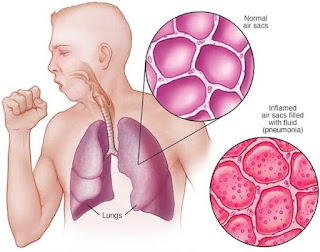Pneumonia is an infection caused by both bacteria and virus. It attacks the air sacs in one of both lungs. The infected sac(s) may fill with phlegm and cause cough and difficulty in breathing.
Pneumonia could be mild to life-threatening
depending on the age and overall health condition of a patient. For example, it
is a serious condition for infants, young kids, septuagenarians and those with
heart ailments.
Pneumonia is curable with early detection and
proper treatment that includes medication and people are advised to take
medicines until they the infection is fully cured. But most patients make a
mistake that is they start missing doses once they feel better.
Pneumonia could come back
If left uncured, the infection could redevelop in
lungs and the second time, it could be resistant to the treatment. Pneumonia
patients have to be very careful with their treatment.
Try managing the symptoms like high fever and cough
by following these steps:
·
Take NSAIDs like ibuprofen and naproxen to control
fever. You can even take aspirin or acetaminophen but never give aspirin to
children.
·
Drinking plenty of fluid would bring up the phlegm
by removing the secretions.
·
Avoid taking medicines for cough because coughing
is the way human body tries to control infection. But if coughing is preventing
you from taking rest, you should ask your doctor to prescribe a cough syrup.
·
Drinking warm beverages and taking steamy baths are
some of the ways to open airways to ease breathing. Or you can use a
humidifier. In case, you see no improvement in breathing, you should visit your
doctor.
·
Rest in a smoke-free environment because smoke
won’t let your lungs heal properly. If you do smoke, it could be a good time to
quit smoking.
·
Get lots of rest. If you are a homemaker, you
should call someone to help in your daily chores. Employed persons and school
children should take leave.
Recovering from pneumonia
Depending on your age and overall health, you could
take time from one week to a month to fully recover from pneumonia.
In most cases, people are allowed to return to their normal life within a week
but they should continue taking rest and medicines until they get rid of
infection.


Comments
Post a Comment